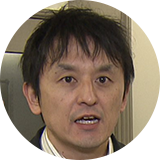Parsons School of Design in New York is one of the world's leading art and fashion schools. It recently held an exhibition in a different field.
Pieces on display included lights made of disposable cutlery, a water heater that uses an empty can and candles, and a backpack constructed out of a discarded life jacket. They were everyday items transformed by students into survival tools.
The exhibit is the result of a program organized by a non-profit group from Kobe, a city in western Japan. "+arts" (Plus Arts) is led by Hirokazu Nagata. Kobe was devastated by the Great Hanshin Earthquake in 1995. 6,434 people in the region were killed.

Nagata and his team interviewed survivors to learn how they coped during the disaster. Many said they took what they could find, like everyday items, and turned them into stuff they could use.
They covered plates with plastic wrap, since there was no running water to clean them with. They turned blankets into a makeshift stretcher to carry the injured.
Nagata realized the dire circumstances forced the survivors to think of these ideas. Under normal conditions, people would not come up with such things. He says the interviews led him to what he is currently doing: sharing these ideas and spreading the importance of disaster preparedness.

Unlike Japan, New York is rarely hit by earthquakes. But it has suffered from its share of natural disasters. The most notable in recent years was Hurricane Sandy in 2012. The storm triggered floods, killing 46 people, and even disrupted trading on Wall Street.
The city has also been affected by other incidents. The September 11 terrorist attacks left 3,000 people dead. And a massive blackout in 2003 paralyzed the city, disrupting its transportation system.
In 2017, Nagata held a weeklong disaster preparedness courses at Parsons. About 300 students have signed up. They come from various fields, including lighting and industrial design, as well as architecture.
A lighting design student fashioned a lamp out of a flashlight and aluminum foil. Usually, a flashlight can only point light in a single direction. But by adding a piece of foil, the student was able to create a device capable of sending light in all directions.

Another student, majoring in product design, made cardboard shoes that can be worn with high heels, making it possible to walk over shards of glass. The shoes can be folded up and easily carried.

One student from India, a country that suffers from frequent flooding and earthquakes, designed a backpack that can be turned into a sleeping bag.

Some of the students decided to do more than just design their own products. They actually went to disaster-hit areas.
After attending Nagata's program, Jeana Chesnik and Gabi Korac visited the US territory of Puerto Rico, which was devastated by Hurricane Maria September 2017.
They noticed how power lines and lights had been destroyed and that electricity was not yet fully restored. They have since worked with a local nonprofit install solar lighting at a playground.
Korac says she never thought about disasters before taking Nagata's class. Now she says she knows how important it is to always be prepared.

Robert Kirkbride is the dean of Parsons School of Constructed Environments. "Learning from catastrophe as a designer, it's really an important opportunity to think about the extreme of human experience and how resilient we can be and how design can help not just sell products, and not just make a designer famous, but how design can help raise social awareness."
"At Parsons, students are from all over the world and they will be future top designers," Nagata says. "Imagining that they can take ideas about disaster preparedness back to their countries, this is an incredible opportunity for us to inspire them to come up with their own ideas."

Using the power of design, Nagata's disaster mitigation efforts are spreading from Japan to New York to the rest of the world.

